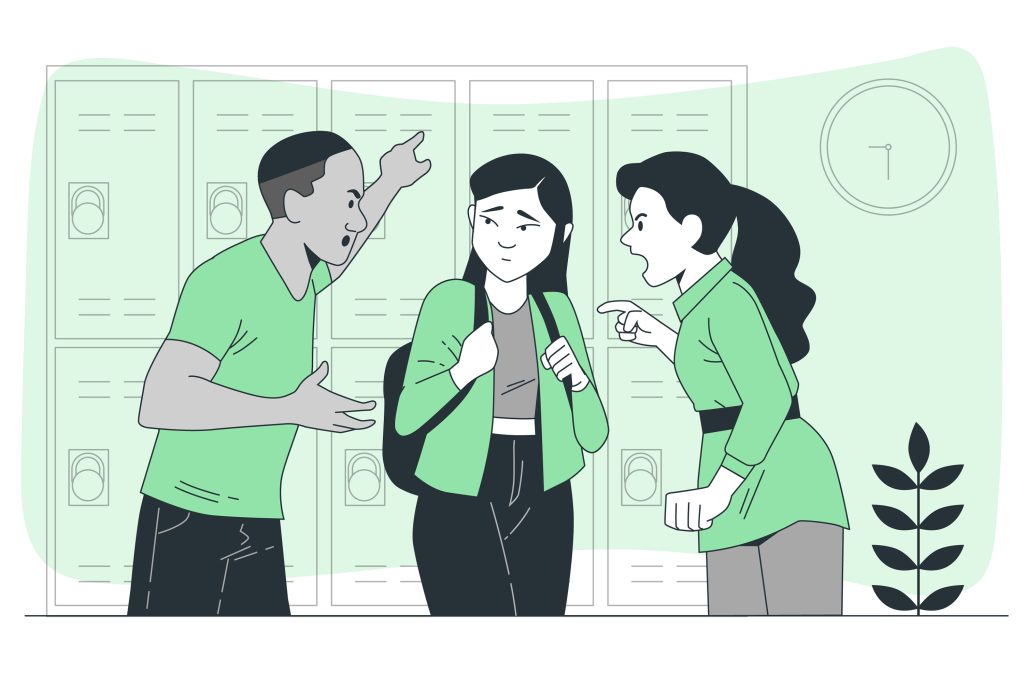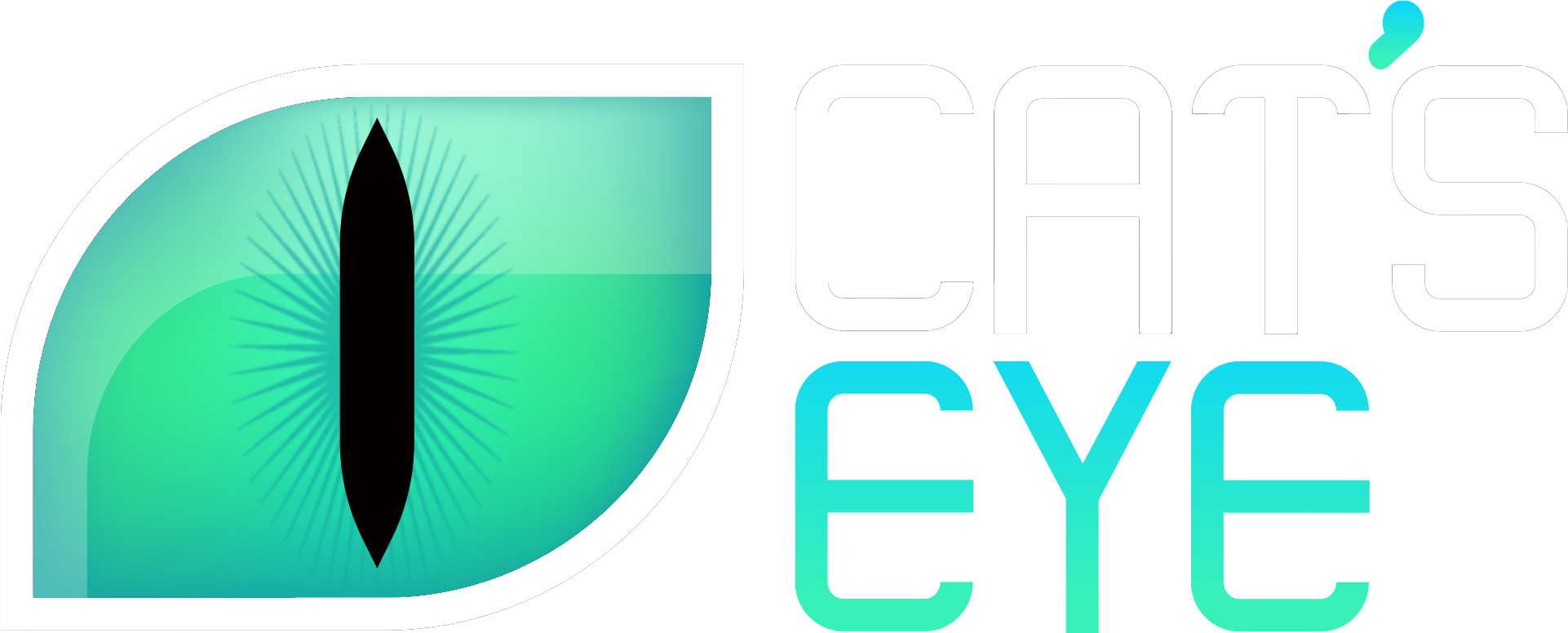Cyberbullying
UNICEF describes cyberbullying as any form of repeated hateful behavior targeting someone aiming to threaten, shame, or otherwise provoke them through technological devices and online platforms, e.g., smartphones, gaming platforms, social media, and so on.
Instances of cyberbullying typically happen among teenagers and are more prevalent than physical bullying. Cyberbullying occurs way more often than in-person bullying since the internet can be easily accessed 24/7. These recurrent hurtful incidents can make people, especially teenagers, feel insecure and unsafe even in their own homes. It is also common for physically strong students to get bullied online because physical confrontation might not be a viable option.
While bullying in person requires full intent of harm, any online joke that crosses a line has the potential to be considered an act of cyberbullying toward the targeted individual. Furthermore, as opposed to physical bullying, online bullying is entirely public. Many people can witness these attacks, which hurts the public image of both parties involved.
Cyberbullying can inflict lasting damage to teenagers’ physical and psychological health. In mild cases, teenagers avoid using social media and show reluctance toward socializing with friends. In severe cases, cyberbullying can lead to self-harm and suicide.

Types
Bullying has roots in having harmful intentions and the existence of a power imbalance between the bully and the person bullied. In physical bullying, this power imbalance is primarily physical, while cyberbullying occurs due to a disparity in social status and popularity. Sometimes gaining more popularity in itself motivates these types of actions. Nevertheless, cyberbullying can be categorized into different shapes and forms according to how the victim is affected.
- Cyberstalking: is the most severe form of cyberbullying, which can even be considered a serious offense in a court of law. It entails stalking or harassing someone in different ways, including libel, sexual harassment, defamation, etc., hiding behind the anonymity afforded by the internet.
- Cyber teasing: online banter or playful teasing is a form of communication that should not usually be considered a threat. However, any comment that upsets the targeted person and is not stopped after a clear objection is made can be regarded as a form of online bullying.
- Hate raid: refers to a flood of abusive comments and harassment by anonymous users targeting creators and streamers on Twitch.
- Internet trolling: an internet troll refers to a person who deliberately posts hurtful and abusive content to provoke their audience to show an emotional response.
- Masquerade: is a form of cyberbullying in which the bully pretends to be someone they are not. The bully either assumes another person’s identity to bully someone else or falsely adopts the victim’s identity to direct abuse toward them.
- Humor: it might seem strange to include humor on this list, but jokes can be as hurtful as other forms of bullying. Inappropriate remarks about sensitive subjects such as race, sexual orientation, or mental health targeting people who are struggling are considered cyberbullying.
Humor vs. Bullying
Due to the innocent nature of humor, hurtful comments could go unnoticed, shielded by a simple interjection of, “I’m just kidding!” However, it is essential to distinguish between laughing at someone and laughing with them.
Unfortunately, most adolescents cannot discern humor from bullying. Here things get slightly complicated. As mentioned earlier, bullying occurs when someone wants to harm other people purposefully. However, sometimes the person has no such intentions, yet an inappropriate joke or untimely banter could send the wrong message and hurt someone.
A general rule to prevent these unpleasant incidents from happening is to establish a friendship first. One should be able to trust that the other person has no intention of harming them before they can relax and laugh with them. Humor is founded upon the strength of friendship between two people. If someone is unaware of the other’s family situation, struggles, and mental health problems, they might easily say something that rubs them the wrong way. In short, there should exist an understanding and acceptance between the two people who are friends prior to teasing and banter.
Why Are Jokes Mistaken for Harassment?
Although the internet has made human interaction much more accessible than before, it also imposes certain limitations on communication that may exacerbate cyberbullying. The lack of social indicators on the internet opens the conversation to a variety of interpretations. When people communicate online, they can neither show facial expressions nor use body language. Furthermore, the tone of voice is usually unknown and assumed by the reader. Therefore, a friendly, humorous comment could be interpreted in a way the speaker did not intend. In other words, the recipient of banter is at a disadvantage when evaluating a comical remark due to a lack of context.
On the other hand, people often mask cyberbullying as jokes to avoid taking responsibility for their behavior. They think labeling cyberbullying as humor helps them bypass reproach and avoid retribution. This evasion of culpability convinces other youngsters not to show any disapproval toward such behavior and laugh along, trying to conform to peer pressure. These blurred boundaries make differentiating between humor and bullying hard.

Emojis: Solution or More Problems?
To make up for the lack of facial expressions online, we now use more than 3000 emojis and an endless number of stickers online to communicate with each other. These tiny digital pictures help people express themselves and ensure their message is interpreted as intended. However, although emoticons cover a wide range of human emotions, actions, jobs, animals, and even symbols, they are still not enough to exhibit the full range of human emotions. Emojis often fail to demonstrate how we feel in real life.
Moreover, emojis can be open to interpretation themselves. Symbols like the bomb, gun, or knife emoji can be used to convey violence. Even popular emojis can have different meanings to different individuals. For instance, a comment aimed to criticize someone that contains the laughing emoji might suggest an abusive message instead of indicating harmless intentions.
Other Solutions
- Social media platforms are constantly improving their community guidelines to prevent cyberbullying. Users can manage and restrict other users’ access to their accounts and online content without notifying them. People can easily block those who intentionally harm them and report online harassment. If the victims refuse to react to certain hurtful content aimed at abusing or threatening them, others can report their activities to protect the victim.
- Those subjected to bullying should seek advice from a trusted adult such as parents, other family members, or the school counselor. These people will offer their help and support and ensure the problem is resolved.
- There are cyberbullying helplines available for those uncomfortable discussing these matters with their parents or who want to talk to a professional counselor.
- If the person abused is in immediate danger, the best solution is to contact the police to report cyberbullying.






